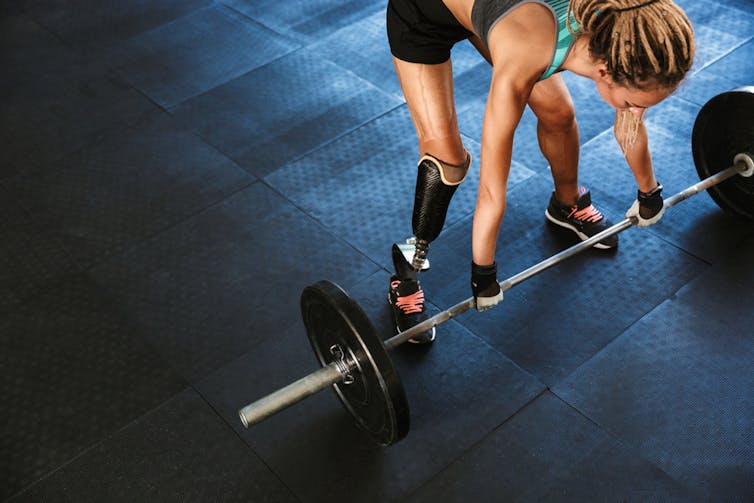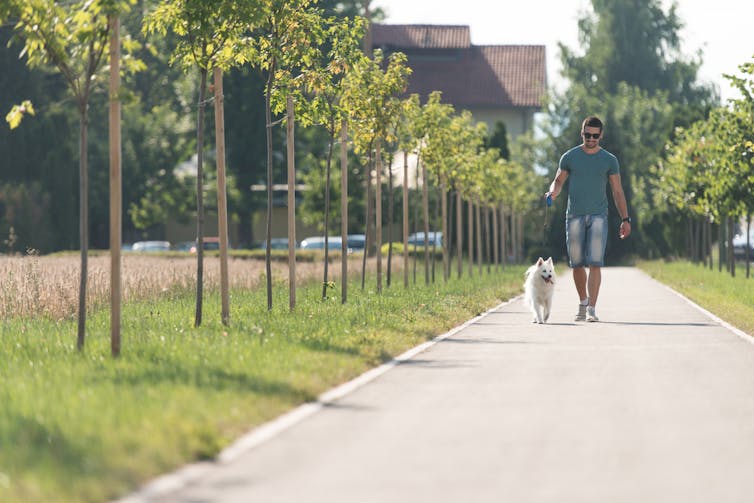How much physical activity should teenagers do, and how can they get enough?
- Written by Vaughan Cruickshank, Program Director – Health and Physical Education, Maths/Science, Faculty of Education, University of Tasmania
Many teenagers spend a lot of time being sedentary (sitting or lying down) at school or work, when travelling and during their free time. Modern conveniences such as smart phones, computers and food delivered to your front door encourage sedentary behaviour. But this lack of physical activity can have negative consequences for your physical and mental health.
Read more: How physical activity in Australian schools can help prevent depression in young people
We have all probably been told we have to exercise to stay healthy, but how much physical activity is the right amount for teenagers? And what are the benefits?
How much and why?
All Australians aged 13-17 are encouraged to do 60 minutes of physical activity each day. There are numerous benefits of physical activity, including physical (improved fitness and decreased risk of illness), social (having fun with friends) and emotional (helps manage stress and anxiety) benefits.
You should try to include a combination of aerobic activities (such as swimming or walking), strength training (such as sit ups or weight training) and flexibility training (such as yoga or stretching).
 Try to include a mix of different types of exercise in your routine.
from www.shutterstock.com
Try to include a mix of different types of exercise in your routine.
from www.shutterstock.com
Try to mix up easy, moderate, and harder activities that are both fun and personally challenging. Limiting sitting time and screen time by regularly interrupting periods of sedentary behaviour is another good idea. For example, standing and moving for a few minutes after every hour of sitting.
There are 1,440 minutes in every day, so being physically active for just 60 minutes is easily achievable.
Planned activities
There are hundreds of types of physical activities you could do. The most important thing is to do activities you enjoy, because you’ll be more likely to keep doing them. Research also suggests you’ll be more likely to be physically active if you exercise with your friends.
Doing a Google search for your location and activity (for example, “swimming clubs near me”) will help you find heaps of clubs and groups you can join up to keep active with your friends, and find new friends with similar interests. Check out some of the types of planned physical activities you can participate in, in the diagram below and challenge yourself to try something new.
Technology can be both good and bad when it comes to physical activity. Smart phones and computers contribute to sedentary behaviour, but they can also be used to promote and encourage physical activity behaviours. There are numerous mobile apps that can help motivate you to increase your physical activity. Getting a pedometer or smart watch could also help motivate you to do the recommend minimum of 10,000 steps a day.
Incidental activity
Another way you can increase your physical activity is to increase the activity you do throughout the day. Incidental activity refers to any movement that increases your level of daily activity. These activities don’t happen at the gym, but instead rely on your daily choices.
For example, office workers are often told to get more activity into their day by doing things such as parking further away from work and walking the rest of the way, and using the stairs instead of the lift.
 Walking the family pet is a good option to work physical activity into your daily routine.
from www.shutterstock.com
Walking the family pet is a good option to work physical activity into your daily routine.
from www.shutterstock.com
Similarly, you could:
- walk or ride to school instead of taking a car or bus
- walk around the oval as you chat to your friends at lunchtime instead of sitting
- do something active when you meet up with your friends on the weekend, such as swimming at the beach
- do an extra lap when you go to the shopping centre and/or, go down every aisle when you go to the supermarket
- at family gatherings, play games with your younger siblings and cousins rather than playing on your phone
- take your dog for a walk and a play at the park more often
- ride an exercise bike or do some stretching while you watch TV
- have “active ads” where you do something active – such as push ups or body weight squats – every time a commercial comes on
- playing exergames like Nintendo Wii can be better than just sitting on the couch.
Read more: Exergames: good for play time, but should not replace physical education
Making these simple choices each day can become a habit that increases your physical activity and improves your health. Incidental activity doesn’t replace planned exercise, but all the activity you do during the day adds up, and these two forms of activity can work together to increase your physical activity level.
Incidental activity requires no special equipment or preparation. You can just stand up and move at any time you choose. Remember: something is better than nothing and more is better than less.
Authors: Vaughan Cruickshank, Program Director – Health and Physical Education, Maths/Science, Faculty of Education, University of Tasmania



